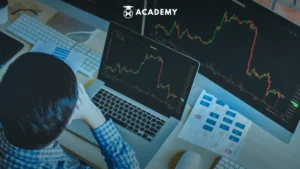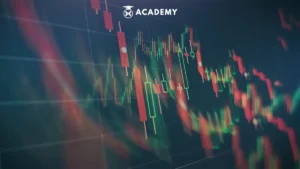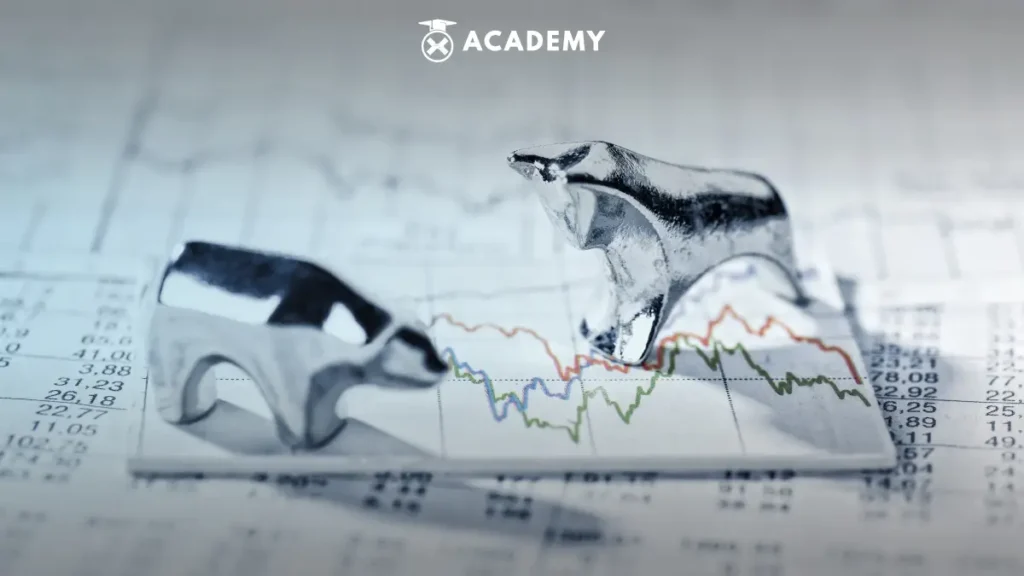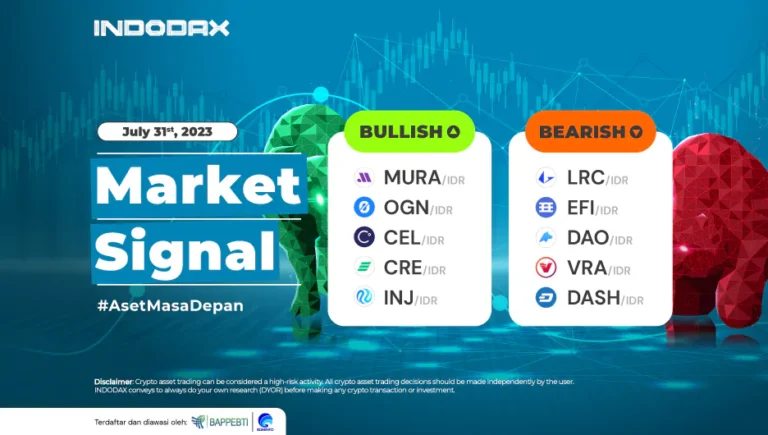Volatility or volatility is a term in the trading world, including crypto, that traders will often encounter.
This term refers to the speed and amount of changes in the price of an asset.
Volatility is also commonly used as an indicator of the investment risk of an asset.
The reason is volatility can show the speed and level of price movement.
So, to understand more about volatility in crypto assets and tips on dealing with it, see the full review below.
What is Volatility?

The definition of volatility is a statistical indicator related to financial market instruments.
This indicator becomes consistently intentional on an asset’s price rise and fall.
Volatility will be recorded as the range of price changes in the difference between the maximum and minimum prices in a certain period in the monthly trading daily trading sessions, and so on.
Also referred to as “market mood,” volatility can also be used to see if an asset price will experience a sharp spike or even weaken (range of fluctuations) alias in conditions of high volatility.
Please note apart from risk, and volatility can be used to measure a risk opportunity.
However, this measure cannot be considered a source of risk in transactions.
In a securities market, market volatility is often associated with dynamics in both directions.
For example, when a crypto asset rises and falls by more than 1 percent in a given period, that’s called an “unstable” market.
That volatility then becomes a major factor when pricing options contracts.
Often, volatility refers to the uncertainty associated with the size of a security’s change in value.
In this case, high volatility means that the security’s value has the potential to spread over a higher range of values.
That is, the price of a security can dramatically change over a short period in either direction.
Meanwhile, low volatility means that the value of a security does not change dramatically and will be more stable.
When measuring the variation of assets, one of the ways that can be used is to measure the daily return (percent movement per day) of the asset in question.
What Are the Types of Volatility in Crypto Assets?
Below are several types of volatility in crypto assets that you need to know, which are as follows:
1. Historical volatility
Historical volatility or historical volatility is almost similar to the standard deviation of the asset value over a certain period which is calculated based on historical prices.
2. Expected volatility
The type of expected volatility is calculated by referring to a current price with the assumption that the market price of an asset will be able to reflect the desired risk.
According to experts, volatility is one of the most important information indicators for a decision regarding opening/closing an asset position.
Historically, the value of Bitcoin, for example, has been very volatile. For example, from October 2017—January 2018, bitcoin price volatility touched nearly 8 percent.
That figure is double the volatility of Bitcoin in the 30 days ending January 15, 2020.
The Volatility Factors Behind Crypto Assets

Several factors cause volatility behind crypto assets, including the following:
1. Bad news impacts adoption rates
The first factor is bad news which always impacts the adoption rate.
In this case, an important event/information related to crypto assets can affect the volatility of this digital asset.
Take, for example, the news of the Mt.Gox crash in early 2014 or the high-profile use of Bitcoin in drug transactions via Silk Road, resulting in the FBI market in October 2013.
Ultimately, the incident example above created a public panic that impacted crypto assets’ value and made their value fall.
2. Problems in evaluating the value of crypto assets
Second, the problem factor in evaluating the value of crypto assets.
It needs to be understood again crypto assets lack intrinsic value capable of providing income like ordinary products/services.
Apart from that, crypto assets are a relatively new investment instrument, so investors need help in evaluating the value of crypto assets through traditional valuation methods.
Being a store of value (stored and exchanged for goods and services in the future), the value of crypto assets is immediately in line with perceptions.
In time, that could make crypto assets vulnerable to market sentiment as well as media portrayals.
3. The future value of cryptocurrencies is uncertain
The next factor driving the volatility of crypto assets is the uncertain future value of cryptos.
It relates to the various judgments regarding the intrinsic value of cryptocurrency assets as a store of value and the way value is transferred.
The store of value is a function of when the asset can be useful in the future with some predictions.
In this case, a store of value can be stored and exchanged for goods/services in the future.
Meanwhile, the value transfer method is each object/concept used to transfer properties as assets from one party to another.
4. Risk for holders who hold large assets
In addition to the three factors above, there is also a risk for holders holding assets greater than the amount in circulation as a factor causing the volatility of crypto assets.
This is because the investors referred to in the future have the potential to make big changes in the market when purchasing new assets/liquidity of current holdings.
In this case, for crypto investors with current holdings exceeding $10,000,000, it remains to be seen how they can liquidate such large positions into fiat positions without drastically moving the market.
Tips and Tricks on How to Deal with Volatility in Crypto Assets
To deal with the volatility of crypto assets, basically, some several tips and tricks can be used, which are as follows:
1. Define a trading style
First, know and determine the trading style that will be used in advance.
This can later be aligned with the risk profile, the type of crypto asset to be purchased, and the purpose of the purchase, both for trading and investment.
2. Understand risk management
Understanding risk management is also important to deal with the volatility of crypto assets.
The first step is determining money management for financial allocation assets, trading crypto assets with small capital first, and being moderate in increasing wealth.
Apart from that, prepare a stop loss level to protect your capital.
3. Understand that the market is always right
It is important to understand that the market is always right because it fluctuates, and everything that happens is always reflected in the price movement.
Because it has been concluded that the market is always right, traders and investors must adapt.
When there is high volatility, it can also provide an overview of current market conditions (market mood).
Therefore, traders must be prepared to adapt by making a trading plan that is in line with market conditions.
4. Must make a trading plan
Before buying crypto assets, traders must make a trading plan first.
The resulting trading plan must be aligned with market conditions and the trading style used.
Apart from that, it also analyzes technical and fundamental crypto assets.
5. Admit mistakes and evaluate
Sometimes, the trading plan that is made does not match expectations or the results at a later date.
Therefore, try to be flexible when something goes wrong, and the trade ends with a loss.
In this case, evaluate where the mistake was so that you don’t repeat the same mistake in the future.
Conclusion
Volatility is a statistical indicator related to financial market instruments and is the intentional, consistent rise and fall of an asset’s price.
The types of volatility in crypto assets that need to be known are historical and expected volatility.
Several factors cause volatility behind crypto assets, including bad news that has an impact on adoption rates, problems in evaluating the value of crypto assets, the value of crypto in the uncertain future, and risks for holders who hold assets big.
So, now you know what volatility is and how to deal with it?
It should also be noted crypto assets such as Bitcoin, EtherVolatility is a variable rate of fluctuation in the price of an asset. Let’s look at a review of what volatility is and why it’s important in trading crypto assets here!eum, and Litecoin are known for having a high level of volatility compared to traditional assets such as stocks or bonds.
Due to the high volatility, investing in crypto requires understanding the risks and choosing the right investment strategy.
Therefore, for those who want to start investing in crypto assets, let’s first check the price of crypto assets on the INDODAX market, like today’s bitcoin price.








